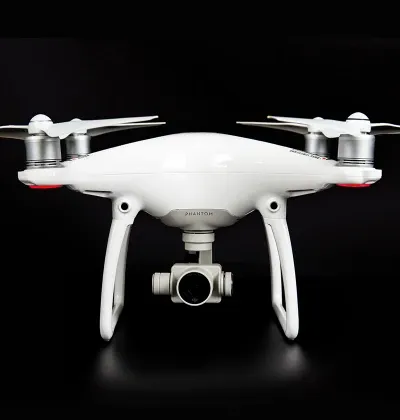- Room 1807, Unit 9, Building 2, Shangxing Commercial Street, Shangde Road, Shangxing Community, Xinqiao Subdistrict, Bao'an District, Shenzhen City, China




Aerospace & UAV
WJ Prototypes is your 3D manufacturing partner from prototype to large scale production.
Consumer Electronics
New Product Introduction Solutions for Consumer Electronics.

Robotics & Automation
Need some assistance bringing your robotic device or parts from the sketch-board to reality?
Medical Devices
The medical industry needs high quality, dependable and safe parts and products.
Automotive
New Product Introduction Solutions for Automotive
Industrial Machinery
The main purpose of industrial prototyping is to take the product from drawings into the real world.

A global market analysis on B2B demand for 3D printed parts—plastic, metal, elastomeric, and other materials—across all industries. This post provides information about countries with significant current and projected demand, segment the demand by material type, and rank countries based on demand volume, growth potential, and strategic opportunity.
The global industrial 3D printing market (additive manufacturing of parts) is now on the order of $20–22 billion (USD) per year. For example, a forecast showing ~$36.8 B in 2026 (with North America alone ~$6.9 B), and MarketsandMarkets projects $17.5 B in 2024 rising to $37.4 B by 2029 (≈16.4% CAGR). Forecasts range widely (some even $57 B by 2028), but all agree on rapid growth (16–26% CAGR) driven by expanding industrial use (automotive, aerospace, defense, healthcare, electronics, etc.) and broadening material options. A 2024 survey found 70% of manufacturers increased parts printed year-over-year, and industry leaders expect significant new impact in healthcare (77% of respondents) and construction (44%). Key drivers are cost-efficient complex parts, lightweighting, customization and faster prototyping across sectors.
B2B demand for printed parts cuts across many sectors. Leading industries driving 3D printed parts today include:
The largest markets today are in North America, Europe and East Asia. Citing recent estimates:
| Country | 2023 Demand (USD) | CAGR (to ~2030) | Key Industries | Top Materials |
|---|---|---|---|---|
| United States | ~$3.1 B | ~21–22% (2025–33) | Aerospace/Defense, Automotive, Healthcare, Industrial manufacturing | Metals, Plastics |
| China | ~$1.44 B | ~27.6% (2024–30) | Automotive, Consumer Electronics, Healthcare, Industrial equipment | Plastics, Metals |
| Japan | ~$1.98 B | ~25.9% (2024–30) | Automotive, Electronics/Semiconductors, Medical devices, Machinery | Metals, Polymers |
| Germany | ~$1.28 B (2024) | ~18% (2025–33) | Automotive, Aerospace, Healthcare, Machinery | Metals, Plastics |
| India | ~$0.707 B (2024) | ~21.7% (2025–33) | Automotive, Aerospace, Healthcare, Construction | Plastics, Metals |
Sources: Country market data are from industry reports. Growth rates are from forecast ranges in those reports.
3D Printing Market, China 3d Printing Market Size, Japan 3d Printing Market Size, Germany 3D Printing Market Overview, India 3D Printing Market Size and Share
United States: The U.S. is the single largest market (about 22% of global). Key drivers are aerospace/defense (NASA, Boeing, GE Aviation), automotive (GM, Ford), medical (specialized devices) and general manufacturing. Materials in high demand include aerospace-grade metals (titanium, aluminum) and engineering plastics for auto parts and industrial tooling. A recent industry survey confirms that “industrial verticals such as aerospace, automotive, healthcare… are adopting 3D printing” for prototypes and end-use parts. Regions like California, Texas and the Northeast (Boston/NYC) are innovation hubs. Government R&D programs (e.g. America Makes) and manufacturing incentives are bolstering adoption. USA: high volume, advanced technology adoption, robust MRO (repair) use, established supply chain.
China: Among the fastest-growing and strategically important markets. China’s 3D printing market was estimated at $1.44 B in 2023 and is projected to grow ~28% yearly to ~$7.9 B by 2030. China’s demand spans automotive (domestic carmakers), high-tech manufacturing (electronics and telecom equipment), aerospace (COMAC aircraft projects) and medical (dentistry, prosthetics). Chinese government initiatives (e.g. the “Additive Manufacturing Industry Development Action Plan” with 100 pilot projects) have prioritized 3D printing in education and industry. Major materials in China are plastics (for consumer-goods prototyping) and metals (steel and titanium for heavy industry). Strategic note: China’s sheer manufacturing scale and state support make it a high-volume, high-growth market with government-driven opportunity.
Japan: A leading Asian market (~9.7% of global). Japan’s market was nearly $2.0 B in 2023, expected to grow ~26% annually to ~$9.9 B by 2030. The demand is led by its strong automotive (Toyota, Honda) and electronics industries, plus precision machinery and medical devices. Japan heavily uses metal 3D printing (titanium, aluminum) for automotive and machine parts, and plastics/ceramics for electronics components. The industrial focus (e.g. robotics, semiconductor tooling) and rapid adoption of new materials keep Japan’s growth high.
Germany (Europe): Europe’s largest single market and a global benchmark for engineering. Germany’s 3D printing demand (~$1.28 B in 2024) is driven by its automotive giants (VW, BMW, Daimler), aerospace suppliers (Airbus facilities), and a strong Mittelstand manufacturing base. Key industries are automotive and aerospace (lightweighting, rapid prototyping) and healthcare (personalized medical implants). For example, VW expanded its metal printing capacity for lightweight components. The German market is expected to grow at roughly 18% CAGR to over $5.6 B by 2033. Materials focus is on metal alloys (for engine/structural parts) and high-performance polymers (for engineering prototypes and tooling). “Strong engineering and innovation” make Germany both a high-volume demand center and strategic technology hub.
India: An emerging market with strong growth potential. India’s printed-parts market was relatively small (~$0.71 B in 2024) but is forecast to expand at ~21.7% CAGR to $4.33 B by 2033. The push comes from India’s growing automotive sector, aerospace (HAL, private startups), healthcare (prosthetics, local medical devices), and especially construction. Notably, India is piloting 3D-printed buildings (e.g. the Ulsoor Bazaar Post Office). Government “Make in India” and infrastructure initiatives support adoption. Key materials are plastics (for prototypes and small components) and metals (for industrial machinery). Growth potential: Very high, given low current penetration and supportive policy; represents a strategic opportunity for suppliers.
| Country | 2023 Demand (USD) | 2025–2030 CAGR | Growth Outlook | Main Industries | Key Materials |
|---|---|---|---|---|---|
| USA | ~$3.1 B | ~21–22% | Moderate–High | Aerospace, Automotive, Healthcare, Industrial | Metals (Ti, Al) and Engineering Plastics |
| China | ~$1.44 B | ~27.6% | Very High | Automotive, Electronics, Healthcare | Plastics (ABS/PA) & Metals (Steel, Al) |
| Japan | ~$1.98 B | ~25.9% | High | Automotive, Electronics, Medical | Metals, High-Performance Polymers |
| Germany | ~$1.28 B (2024) | ~18% | High | Automotive, Aerospace, Healthcare | Metals (Ti alloys) & Plastics |
| India | ~$0.707 B | ~21.7% | Very High | Automotive, Aerospace, Healthcare, Construction | Plastics, Metals |
| United Kingdom | ~$0.6 B | ~15–20% (est.) | High | Aerospace, Automotive, Healthcare | Plastics, Metals |
| South Korea | – | ~20–25% (est.) | High | Medical Devices, Electronics, Automotive | Polymers, Elastomers |
Demand volumes and CAGRs are from industry reports. “Growth Outlook” is qualitative (growth rate and market maturity). Industries/materials are those noted in each country’s market analysis.
In summary, North America (USA, Canada) has the largest current demand and many aerospace/automotive applications; Europe (led by Germany and UK) has strong industrial demand (auto, aerospace, healthcare) and mature uptake; Asia (China, Japan, South Korea) combines growing electronics/auto sectors and heavy government support, making it the fastest-growing region. Emerging markets like India and parts of Latin America/Africa present high-percentage growth opportunities from a small base, especially in automotive, medical, and construction uses.
Key Industries by Country: Each leading country’s demand is driven by its industrial strengths. For example, Germany’s demand is powered by carmakers and aerospace (VW, Airbus), Japan by its auto and electronics giants, and the US by defense and healthcare manufacturing. China’s market is broad (auto, consumer electronics, plus government infrastructure projects). Across countries, automotive and aerospace consistently rank as top end-users of 3D printed parts.
Top Materials by Country: In the US, metals (titanium, aluminum) are especially critical in aerospace/automotive. In China and India, polymers (PA12 nylon, ABS) are widely used for prototyping and consumer parts, along with increasing metal use. In Europe, a mix of high-end polymers (for engineering parts) and metals are used in automotive and machine-tooling. Across healthcare applications (in virtually all regions), biocompatible plastics and metals (e.g. cobalt-chrome, stainless steel) are prevalent.
| Country | 2023 Demand (USD) | 2025–2030 CAGR | Key Industries | Top Materials |
|---|---|---|---|---|
| USA | ~$3.1 B | ~21% | Aerospace, Automotive, Healthcare | Ti/Al alloys; engineering plastics |
| China | ~$1.44 B | ~27.6% | Automotive, Electronics, Healthcare | Plastics (PA, ABS); steel/Al metals |
| Japan | ~$1.98 B | ~25.9% | Automotive, Electronics, Medical | Metals; high-performance polymers |
| Germany | ~$1.28 B (2024) | ~18% | Automotive, Aerospace, Healthcare | Metals; advanced plastics |
| India | ~$0.707 B | ~21.7% | Automotive, Aerospace, Healthcare, Construction | Plastics; metals |
| UK | ~$0.6 B | ~15–20% (est.) | Aerospace, Automotive, Healthcare | Plastics; metals |
| South Korea | – | ~20–25% (est.) | Medical Devices, Electronics, Automotive | Polymers; TPU elastomers |
(Country market data from cited industry sources. “–” indicates data not explicitly cited.)
Each country’s 3D printing market reflects its economic profile: heavy manufacturing nations (USA, Germany, Japan) have high volume demand, tech-driven economies (China, India) show the faster growth, and nations with targeted policies (South Korea, India, China) represent strategic opportunities for vendors. Across all, plastics and metals dominate the material mix, with usage tailored to industry needs (e.g. flexible elastomers for automotive interiors, ceramic-filled resins in electronics).
Sources: Authoritative market reports and industry surveys as cited above. All figures and statements are drawn from these industry sources.
1. https://market.us/report/3d-printing-market/
2. https://www.grandviewresearch.com/horizon/outlook/3d-printing-market/china
3. https://www.grandviewresearch.com/horizon/outlook/3d-printing-market/japan
4. https://www.imarcgroup.com/germany-3d-printing-market
5. https://www.imarcgroup.com/india-3d-printing-market
6. https://www.fortunebusinessinsights.com/3d-printing-material-market-102296
8. https://www.marketsandmarkets.com/PressReleases/3d-printing-metal.asp
You can submit your designs to us through our contact us page
OR Email to info@wjprototypes.com